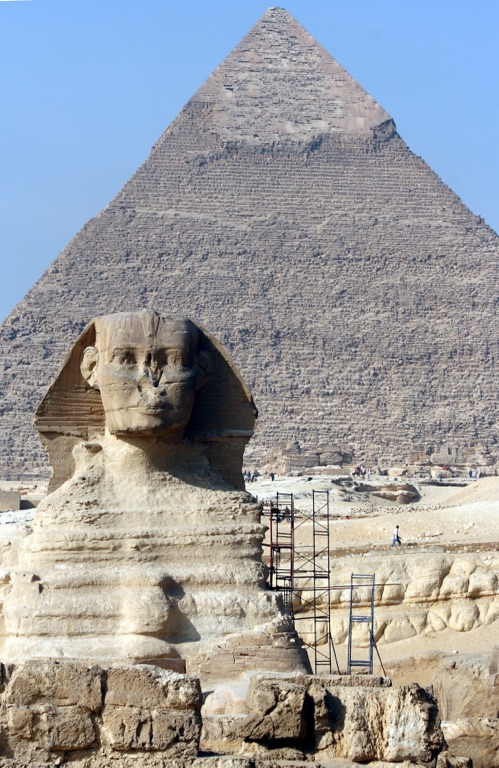Summary
Scrutinizing the Sphinx’s Age
The mysteries surrounding the Great Sphinx of Giza, primarily its age, continue to pique scholarly interest. The traditional belief places its construction during the reign of Pharaoh Khafre, yet evidence from geological studies hints at a much older origin. Difficulties in employing precise dating methods on the Sphinx itself mean that this enigma endures, with theories ranging across centuries.
Get your dose of History via Email
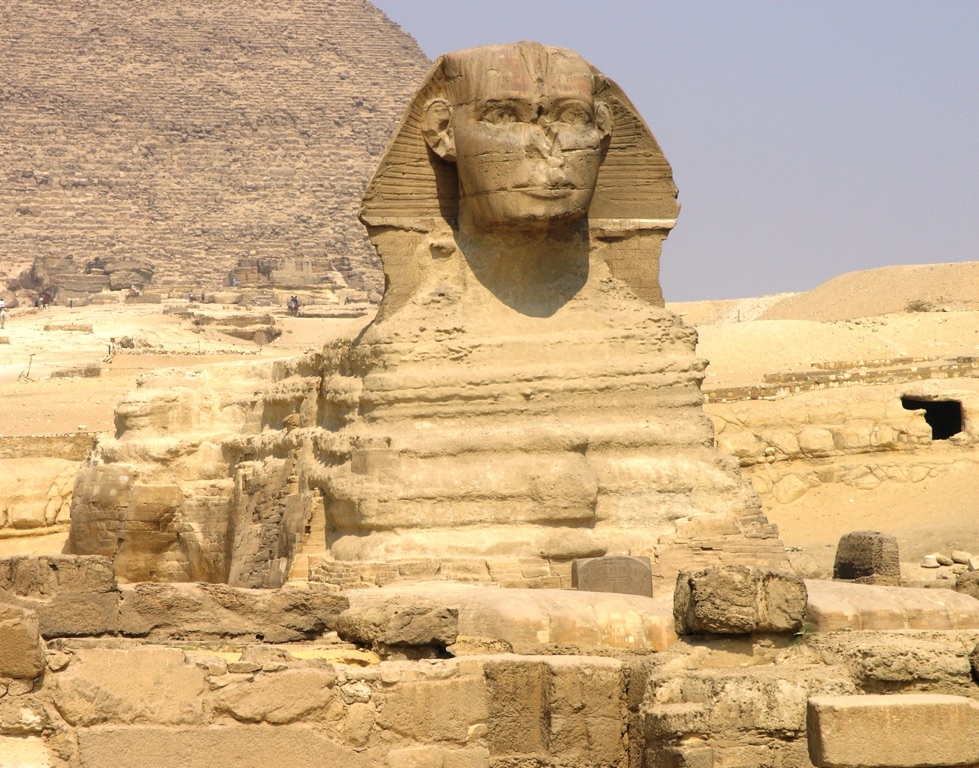
The Sphinx’s Symbolic Interpretations
The Great Sphinx has also served as a potent symbol, entrenched in the cultural and religious fabric of ancient Egypt. Its leonine body and human head suggest a link to solar worship, portraying the pharaoh as a divine protector. Modern interpretations of the Sphinx extend its significance, contemplating its role in the mythical and touristic imaginations.
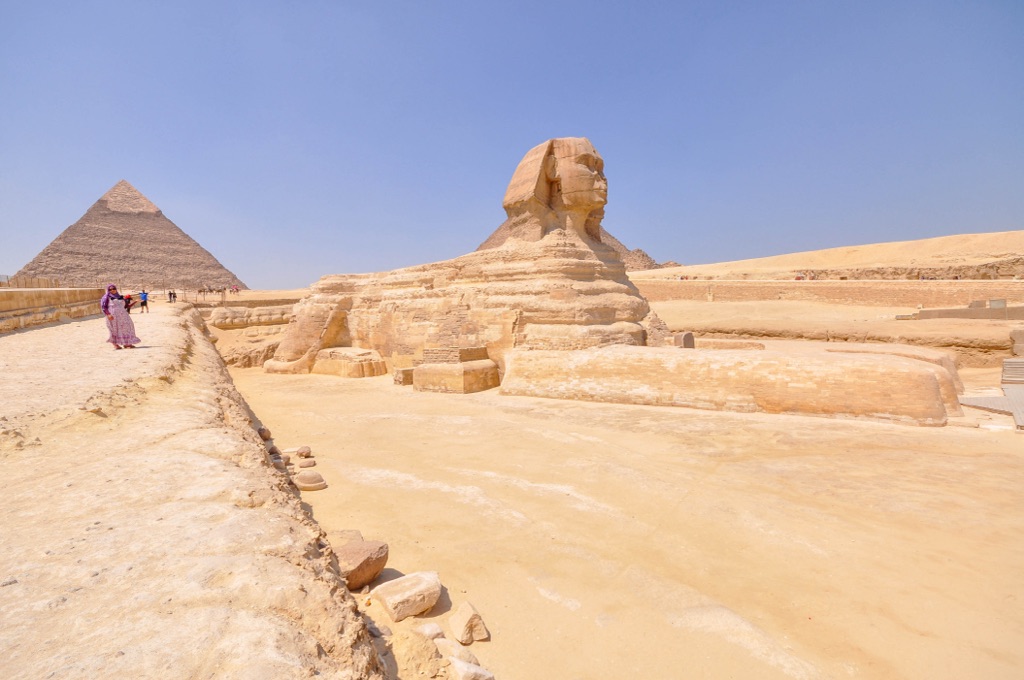
The Origins and Construction of the Sphinx
Tracing the Sphinx’s Lineage
The Great Sphinx of Giza’s origins remain shrouded in mystery, with its birth generally attributed to the reign of Pharaoh Khafre during the Fourth Dynasty. This attribution primarily comes from its alignment with Khafre’s pyramid complex, indicating it could serve as his spiritual guardian. Contrasting theories, bolstered by geological and topographical surveys, suggest it may predate the age of the pharaohs, prompting debates among archaeologists.

Engineering the Colossal Statue
Carved from the limestone bedrock of the Giza Plateau, the Sphinx stands as an awe-inspiring feat of ancient engineering. Its construction likely required a combination of sledges, ropes, and ramps alongside copper chisels and stone mallets. The austere climate of the time presents a plausible challenge that ancient builders adeptly navigated, embodying remarkable mastery and skill.
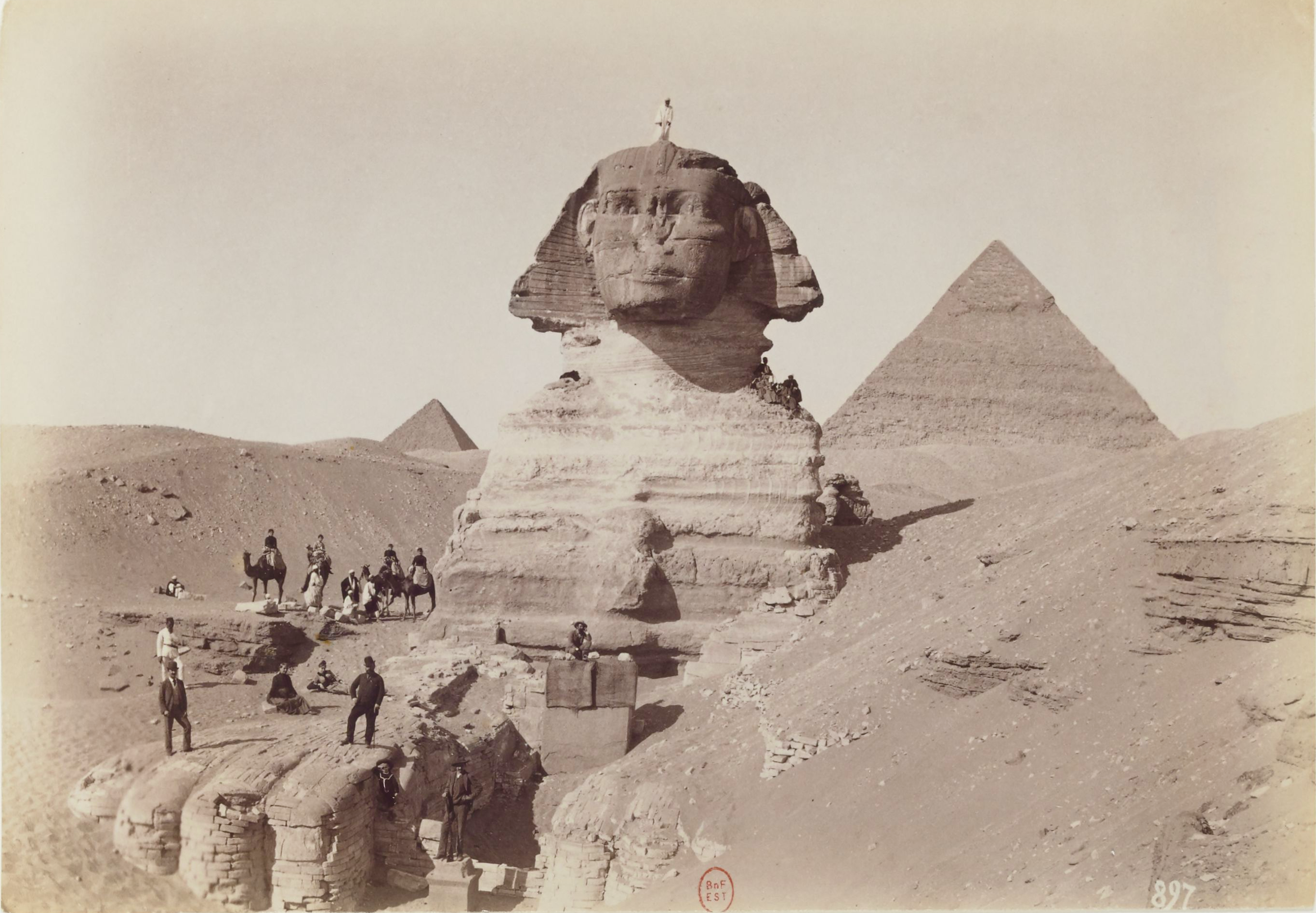
Spiritual Essence in Stonework
Beyond its physicality, the Sphinx possibly embodies the essence of celestial worship prevalent in Old Kingdom Egypt. Certain scholars posit that its gaze aligning with the rising sun during the equinoxes could celebrate the solar deity Ra, conflating divine and royal prowess in the Sphinx’s form. This celestial connection emphasizes the Sphinx’s integral role in the religious and cultural fabric of its time.
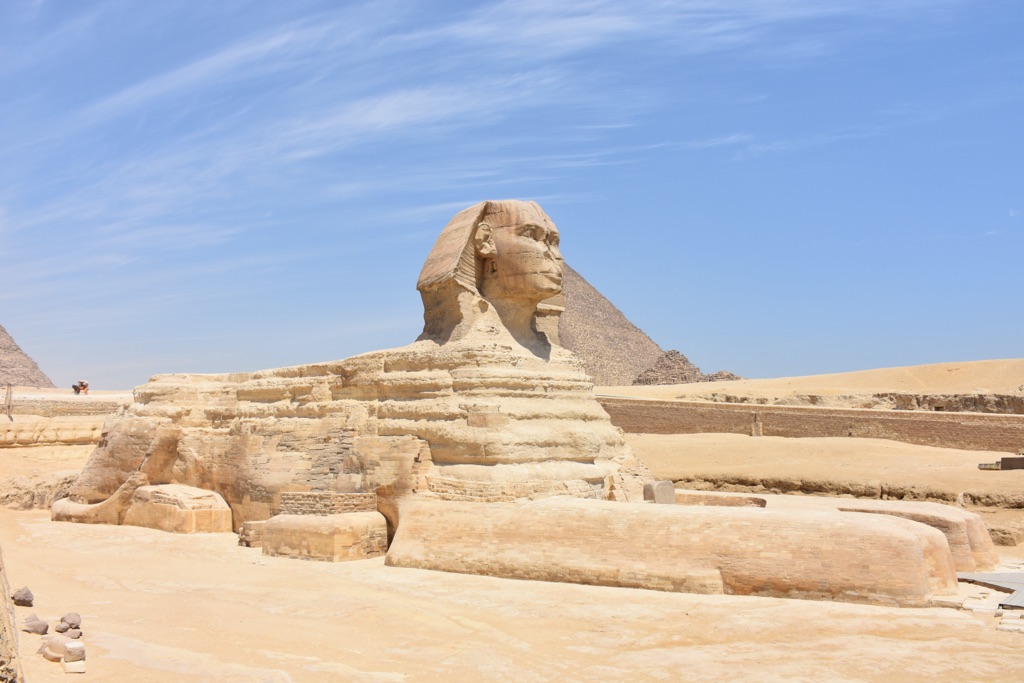
The Riddle of the Sphinx: Myths and Legends
Origins of the Sphinx’s Riddle
The Sphinx’s riddle is famous in Greek myths, primarily associated with the story of Oedipus. The legend presents the Sphinx as a creature that poses a riddle to passersby, and devours those who fail to solve it. While the Greek Sphinx differs from the Egyptian, the idea of enigmatic wisdom attached to the Giza’s Sphinx adds a rich layer to its mythology.
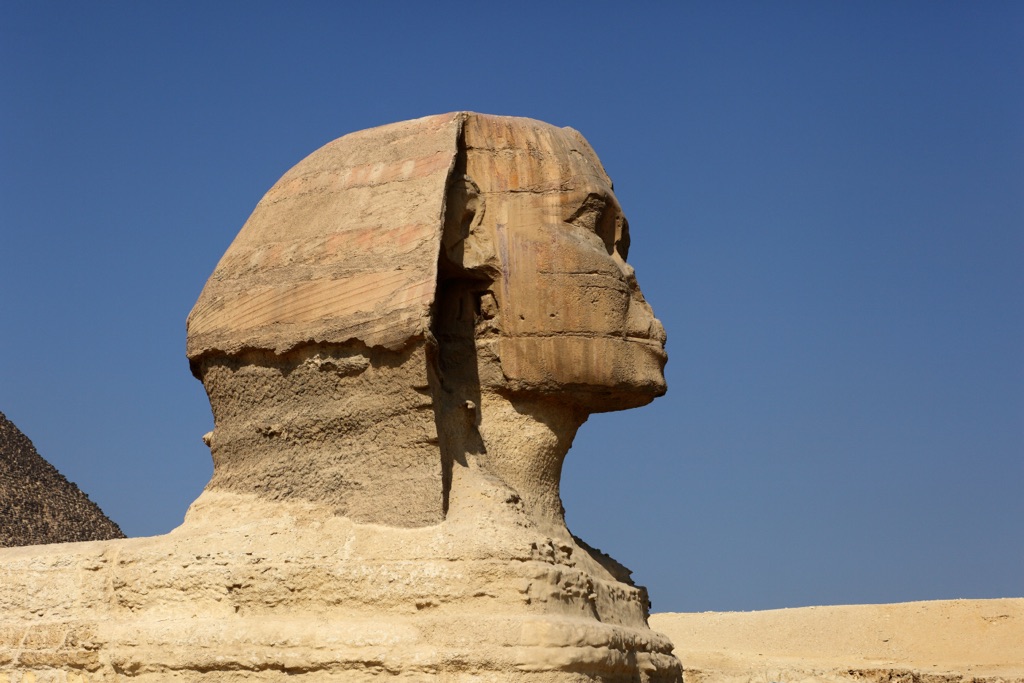
Symbolism in Ancient Art and Culture
The Sphinx has been an enduring symbol in various art forms, embodying the amalgamation of human intellect and animal strength. This fusion is revered in many traditions, representing spiritual guardianship and protection. Throughout history, the Sphinx’s image has encapsulated the allure of the ancient world and its mysteries, appearing in numerous cultural artifacts.
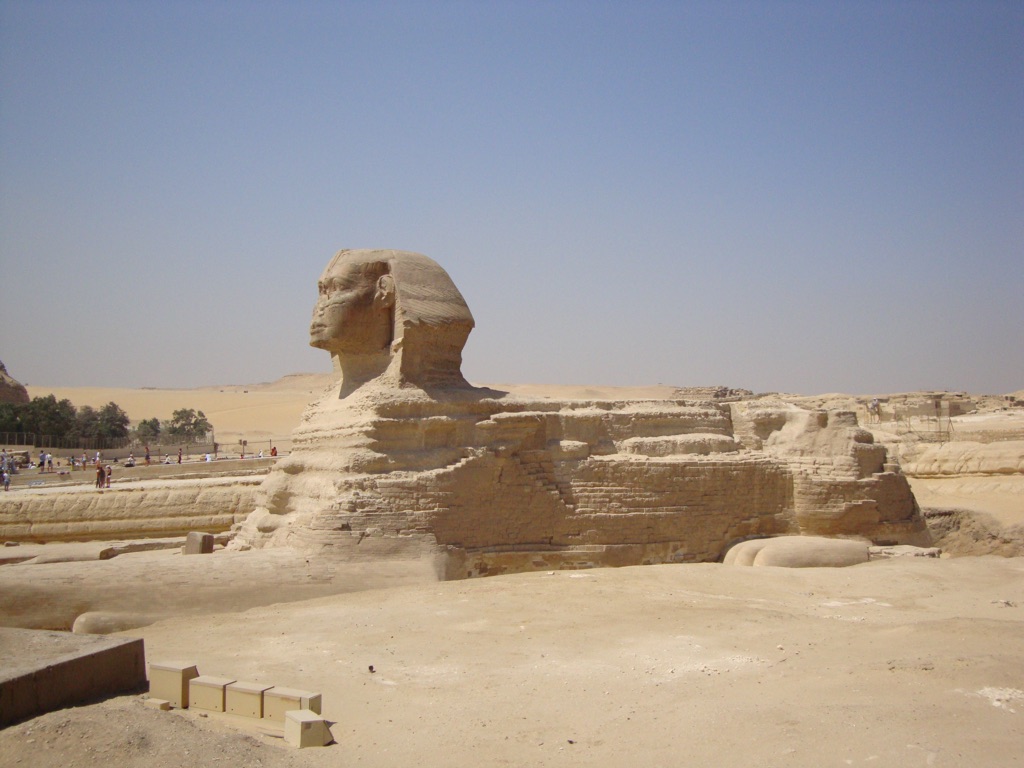
Contemporary References and Impact
In modern times, the Great Sphinx continues to hold a place in popular culture, from literature to film. It often symbolizes enigmatic and ancient wisdom. The riddles of the Sphinx persist in representing the unknown and the allure of uncovering hidden truths, making it a profound motif for intellectual pursuit and discovery.
It appears that the title and specific historical subject for the article have not been provided. Could you please supply the missing details such as the exact history subject so that I can create the article for you accordingly? Once I have the appropriate information, I’ll be ready to follow the provided guidelines to construct the content.
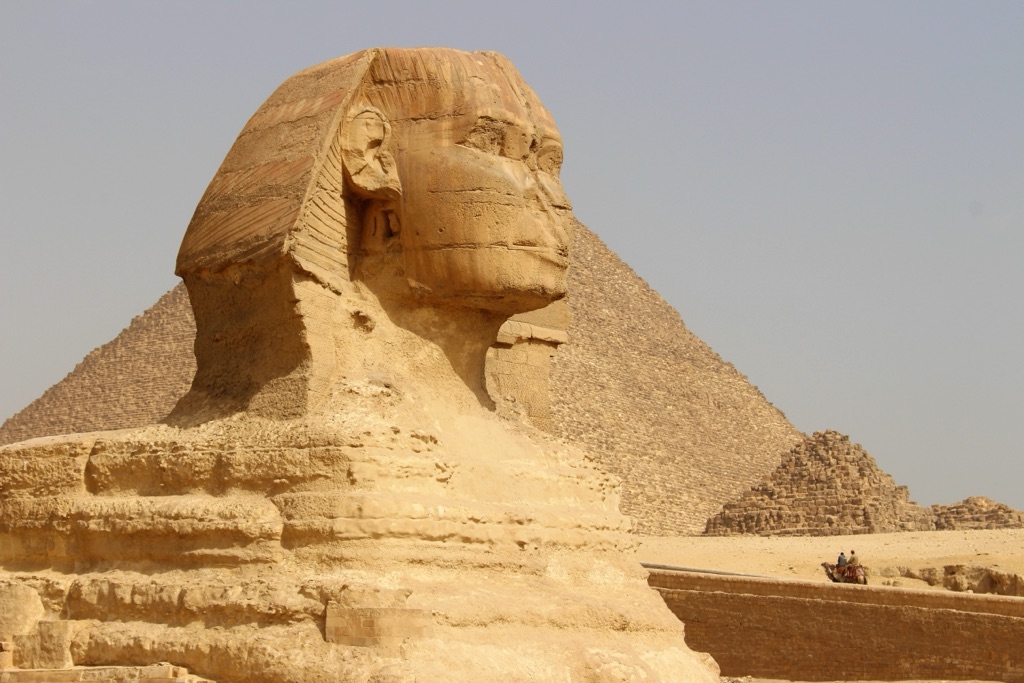
Restoration Efforts and Archaeological Studies
Stabilizing Age-Old Structures
Modern restoration efforts aim to bring stability to ancient wonders facing decay. With careful precision, engineers and archaeologists work hand in hand, reinforcing delicate structures within legal and ethical guidelines. They focus on counteracting damage caused by pollution, weather, and time’s relentless march. Innovative methods are continually emerging, with experts employing non-destructive techniques to underpin flaking walls and eroded foundations. These restorations breathe new life into historic sites, ensuring they survive for future generations to explore and appreciate.
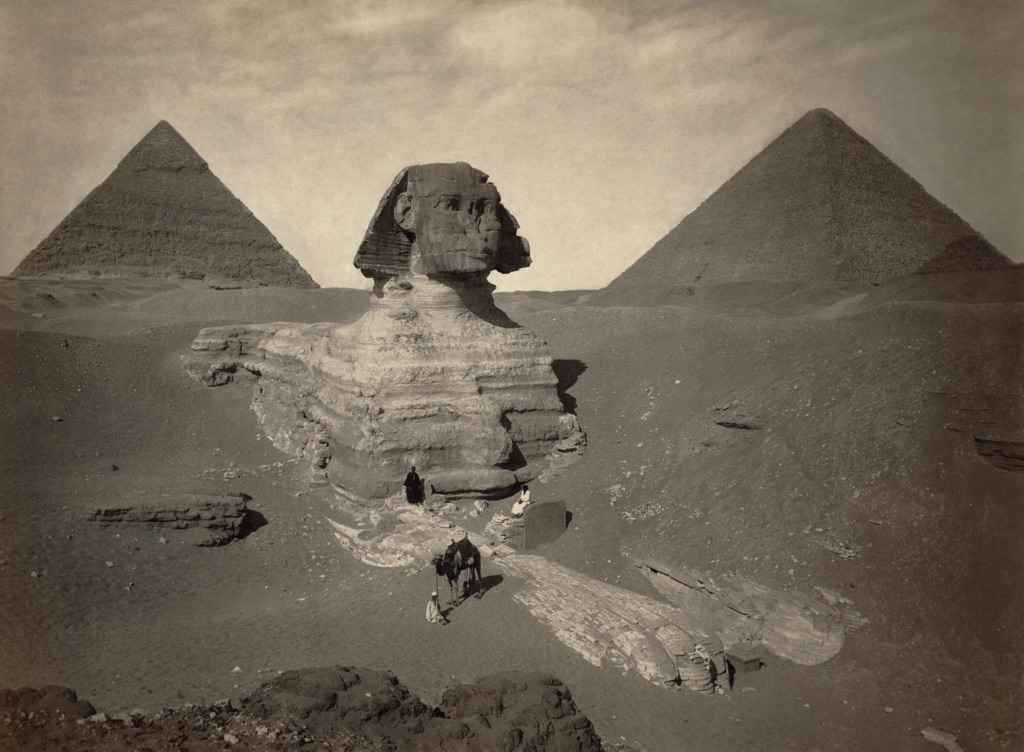
Unveiling Historical Secrets of the Great Sphinx of Giza
Archaeological excavations delve deep into the human story, unearthing artifacts and ruins that rewrite history books. These studies provide a tangible link to our past, conjuring images of ancient daily life and grand civilizations. Archaeologists use tools like ground-penetrating radar and 3D imaging to uncover hidden chambers and lost cities without disturbing the soil. Each find, from the smallest shard of pottery to the most grandiose temple, shines a light on the genius of earlier societies and their enduring legacy.
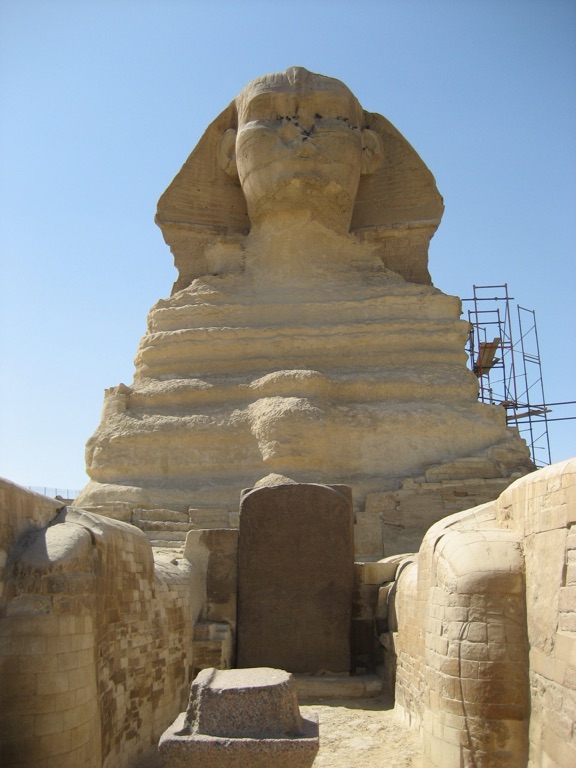
Preserving Our Heritage
The art of preservation lies in the delicate balance between protecting and sharing historical treasures. Cultural sites beckon tourists, historians, and locals to learn from the past while also necessitating safeguarding from harm. Carefully crafted guidelines ensure that interventions maintain the site’s integrity. Conservationists emphasize minimal, reversible actions that support the original materials and designs. Thus, our global heritage remains intact, inviting all to witness history’s splendor in its genuine form.
The Chronicles of Ancient Engineering
Innovative Dating Techniques
Unraveling the timeline of historical structures often hinges on the use of advanced dating methods. Radiocarbon dating, for instance, measures the decay of carbon isotopes to approximate the age of organic materials. Similarly, dendrochronology examines the growth rings in wood to pinpoint the exact year of construction. These scientific techniques arm historians with evidence to support or challenge long-standing theories about ancient landmarks. As they shed light on the chronology of historical sites, these methods also bring us closer to understanding the advancements of past civilizations.
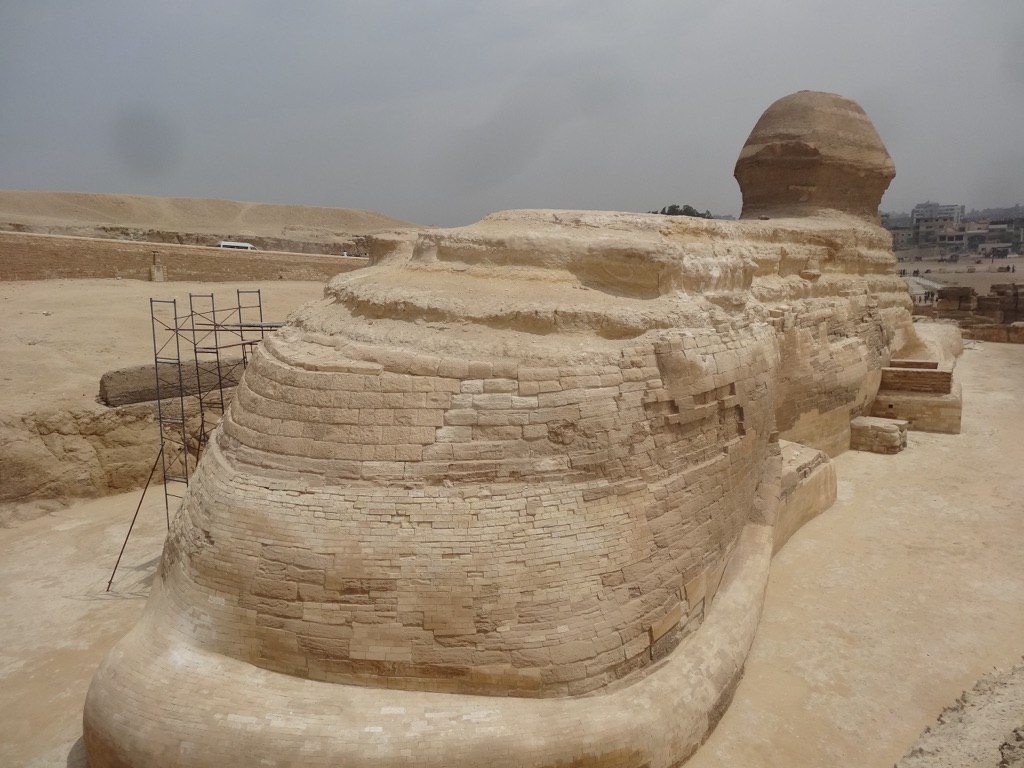
Theories of Ancient Architecture
The ingenuity of ancient structures continues to inspire awe and curiosity. The precision with which monuments like the Pyramids of Giza were built remains a puzzle. Some scholars propose the use of sophisticated tools and ramps, while others suggest that the alignment with celestial bodies hints at a deep understanding of astronomy. These theories are vital in piecing together the skills and knowledge of ancient builders. They offer glimpses into the mastery of architecture and engineering that was far ahead of its time.

Cultural Significance and Interpretation of the Great Sphinx of Giza
Ancient edifices are not merely historical artifacts; they are beacons of cultural significance. They stand testament to the social, religious, and political beliefs of their creators. Theories about their purpose range from tombs to temples to astronomical markers. Interpretations vary, mirroring the changing perspectives and values of contemporary researchers. Acknowledging these varying viewpoints is crucial in grasping the multifaceted nature of historical sites. They narrate stories of ambition, reverence, and the human drive to leave a lasting legacy.
Restoration Efforts and Archaeological Studies
Stabilizing Age-Old Structures
Modern restoration efforts aim to bring stability to ancient wonders facing decay. With careful precision, engineers and archaeologists work hand in hand, reinforcing delicate structures within legal and ethical guidelines. They focus on counteracting damage caused by pollution, weather, and time’s relentless march. Innovative methods are continually emerging, with experts employing non-destructive techniques to underpin flaking walls and eroded foundations. These restorations breathe new life into historic sites, ensuring they survive for future generations to explore and appreciate.

Unveiling Historical Secrets
Archaeological excavations delve deep into the human story, unearthing artifacts and ruins that rewrite history books. These studies provide a tangible link to our past, conjuring images of ancient daily life and grand civilizations. Archaeologists use tools like ground-penetrating radar and 3D imaging to uncover hidden chambers and lost cities without disturbing the soil. Each find, from the smallest shard of pottery to the most grandiose temple, shines a light on the genius of earlier societies and their enduring legacy.
Preserving Our Heritage
The art of preservation lies in the delicate balance between protecting and sharing historical treasures. Cultural sites beckon tourists, historians, and locals to learn from the past while also necessitating safeguarding from harm. Carefully crafted guidelines ensure that interventions maintain the site’s integrity. Conservationists emphasize minimal, reversible actions that support the original materials and designs. Thus, our global heritage remains intact, inviting all to witness history’s splendor in its genuine form.
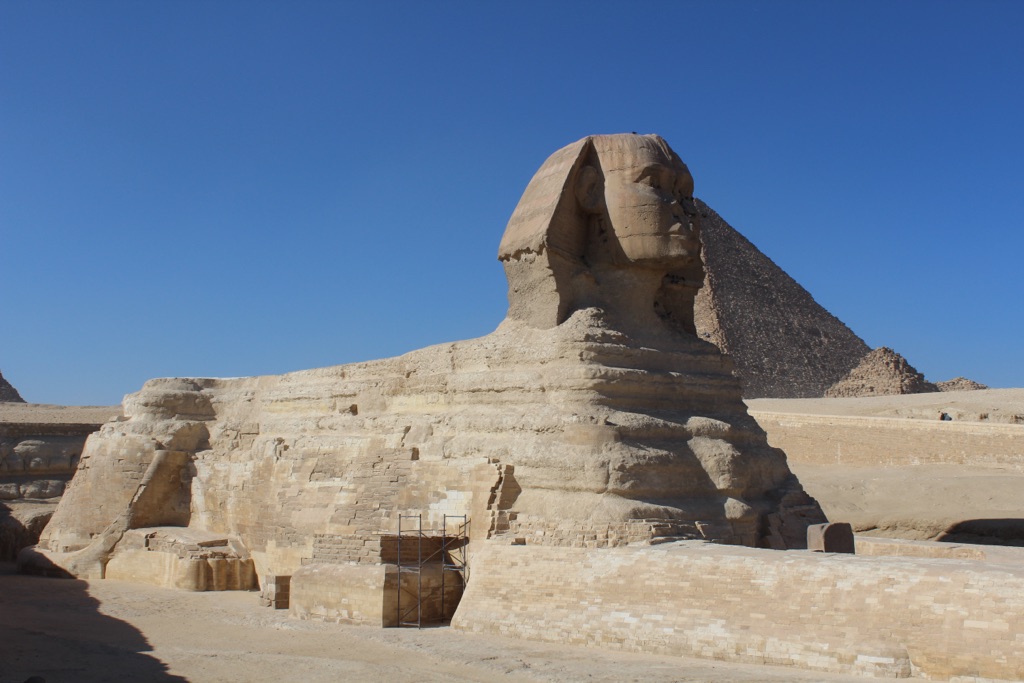
The Sphinx in Cultural Imagination
A Symbol Through Ages
The Great Sphinx of Giza, an enduring figure of mystique, has transcended its original Egyptian roots to become a universal symbol. It graces art, literature, and popular culture with its mysterious aura. From the Greek myth of Oedipus to modern movies, the Sphinx appears as a gatekeeper of secrets, endlessly challenging heroes and seekers with its riddles. Artists have reimagined it in countless forms, each depiction adding layers to its enigmatic nature. In this way, the Sphinx continues to spark the human imagination across diverse cultures and eras.
An Icon in Literature and Film
Writers and filmmakers often draw upon the Sphinx’s alluring mystery to weave compelling narratives. It stars in tales of adventure, where its presence hints at untold knowledge and hidden dangers. The statue often stands as a metaphor for the eternal search for understanding that defines our human journey. In movies, the Sphinx provides a backdrop for stories of exploration and discovery, helping to ground fantastical plots in a recognizable reality. Its iconic silhouette ensures that it remains a captivating subject for storytellers around the world.
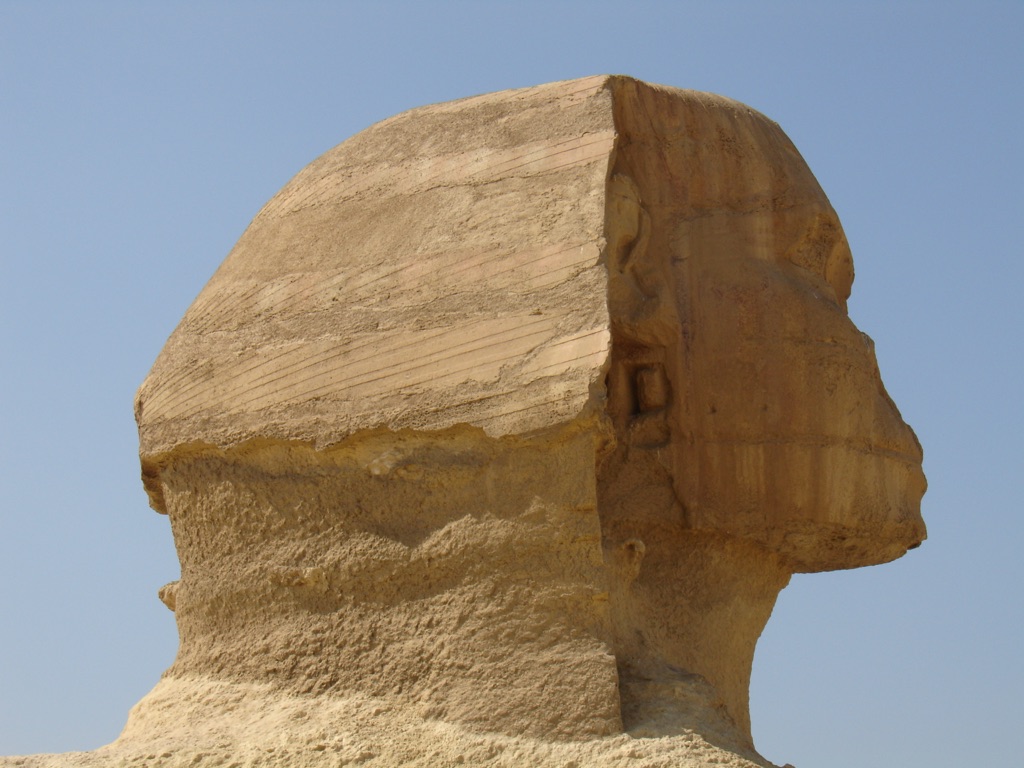
Modern Metaphorical Meanings
In today’s cultural landscape, the Great Sphinx of Giza often represents the unknown and the unfathomable depths of the human mind. Psychologists reference it when discussing the subconscious, while philosophers use it to symbolize life’s unanswerable questions. In artwork, the representation of the Sphinx invites viewers to confront the enigma within themselves. Its image prompts reflection, pushing people to ponder the complexities of their own existence. As a result, the Sphinx stands not only as a relic of ancient civilizations but as a beacon to human introspection and curiosity.
Conclusion and Sources
Our journey through the enigmatic history of the Great Sphinx of Giza has taken us from its legendary origins to its significant impact on culture and the arts. As we consider the array of historical interpretations and research, it’s clear that the Sphinx’s mysteries continue to challenge and intrigue scholars and enthusiasts alike, ensuring its legacy endures through the ages.
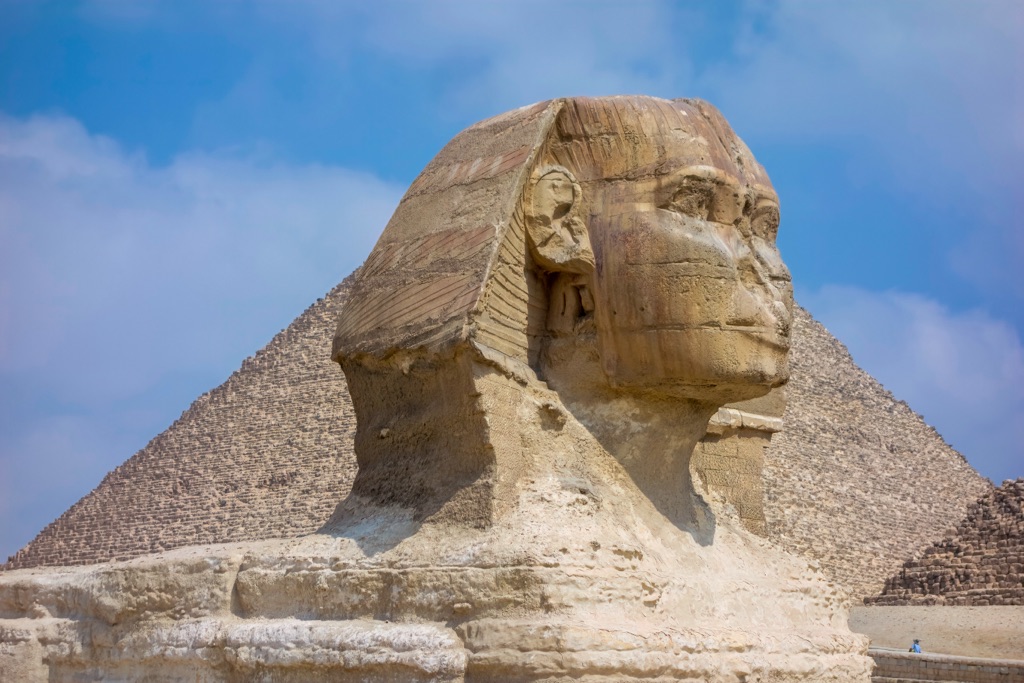
For further reading and to validate the information presented in this article, the following sources are recommended:
Or you can check any of these reputable archaeological and historical texts:
Hawass, Z. (1998). ‘The Secrets of the Sphinx: Restoration Past and Present.’ American University in Cairo Press, Cairo.
Lehner, M. (1997). ‘The Complete Pyramids.’ Thames & Hudson, London.
Stadelmann, R. (1989). ‘Die ägyptischen Pyramiden: Vom Ziegelbau Zum Weltwunder.’ Verlag Philipp von Zabern, Mainz.
Verner, M. (2001). ‘The Pyramids: The Mystery, Culture and Science of Egypt’s Great Monuments.’ Grove Press, New York.
Ray, J. (2004). ‘Reflections of Osiris: Lives from Ancient Egypt.’ Profile Books, London.

